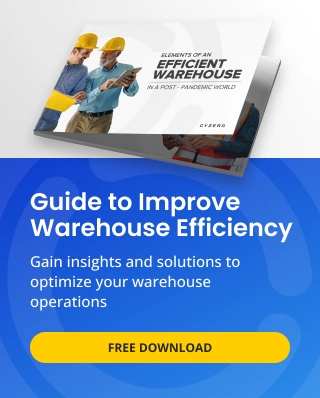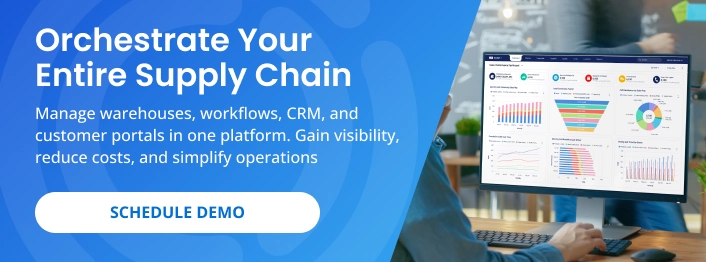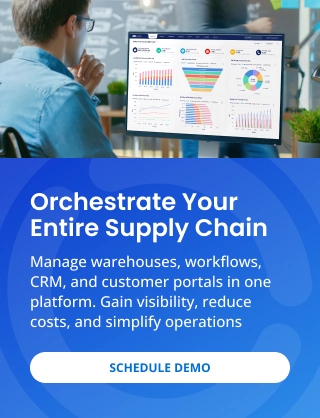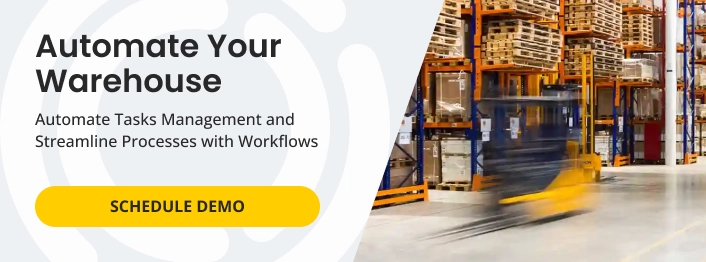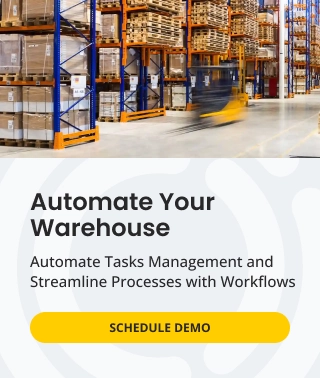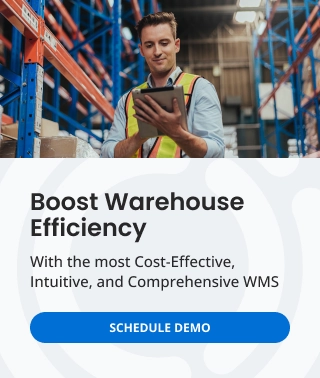Supply chain planning is the process of forecasting demand and aligning every part of the supply chain—procurement, production, warehousing, and transportation—to meet that demand efficiently. It connects data, people, and systems, turning information into actionable insights that help businesses stay agile and competitive.
With growing supply chain complexity and economic uncertainty, the importance of supply chain planning has never been higher. A well-executed plan helps organizations optimize resources, minimize disruptions, and make smarter, data-driven decisions. In fact, studies show that companies with advanced planning capabilities can cut logistics costs by up to 15% while improving delivery performance.
In the following sections, we’ll explore what supply chain planning involves, why it matters, and how technology and professional services can help businesses build a more resilient, predictable, and efficient supply chain.
What Is Supply Chain Planning?
Supply chain planning is the process of coordinating every activity involved in moving goods from suppliers to customers. It aligns demand forecasts with production, inventory, and distribution strategies to ensure products reach their destination efficiently and on time.
At its core, this planning process connects data from multiple functions—procurement, manufacturing, warehousing, and logistics—into one unified strategy. This integration helps businesses anticipate market changes, balance supply and demand, and use resources more effectively.
A well-designed plan doesn’t just focus on today’s needs. It predicts what will happen next. By combining real-time data with forecasting models, companies can prepare for seasonal trends, economic shifts, and unexpected disruptions. This foresight helps avoid common issues like overstocking, underproduction, and delayed deliveries.
Modern planning tools go beyond spreadsheets and manual coordination. They rely on advanced analytics and automation to deliver visibility across every stage of the supply chain. With these capabilities, businesses can make informed decisions faster and maintain control even in complex global operations.
In short, an effective supply chain strategy acts as the blueprint for operational success. It transforms reactive decisions into proactive planning—allowing companies to meet customer needs while keeping costs and risks under control.
The Importance of Planning
The importance of supply chain planning lies in its ability to turn uncertainty into control. Without a solid plan, even small disruptions—like a delayed shipment or sudden spike in demand—can ripple across operations, increasing costs and reducing customer satisfaction.
A well-structured supply chain plan ensures every part of the business works toward the same goals. Procurement teams know what materials to order, production lines run at optimal capacity, and logistics teams schedule deliveries with precision. This coordination minimizes waste, shortens lead times, and prevents overproduction or stockouts.
Effective planning also enables better demand forecasting. By analyzing historical data and market trends, companies can anticipate future needs instead of reacting to last-minute surprises. This proactive approach not only reduces excess inventory but also keeps products available when customers need them most.
Beyond efficiency, supply chain planning plays a vital role in risk management. Global events, supplier issues, or transportation delays can all disrupt operations. Companies with a structured plan can quickly adapt—rerouting shipments, adjusting production schedules, or finding alternative suppliers to maintain continuity.
The benefits extend beyond day-to-day operations. A data-driven planning process provides executives with clear insights into performance and costs, empowering smarter decisions that strengthen profitability and resilience. According to Deloitte, businesses with advanced planning capabilities experience up to 20% higher supply chain efficiency and significantly lower logistics expenses.
In essence, supply chain planning is the foundation of long-term success. It allows organizations to operate predictably, improve collaboration, and deliver on customer expectations—no matter how the market changes.
Key Components of an Effective Supply Chain Plan
A strong supply chain plan includes several key components that work together to create efficiency and reliability. Each part supports the others, forming a system that balances cost, speed, and customer satisfaction.
Demand Forecasting
Accurate forecasting is the foundation of any successful plan. It predicts future product demand by analyzing past sales, market trends, and seasonal changes. When forecasts are precise, companies can produce and stock the right amount of goods.
As a result, they avoid overproduction, excess inventory, and missed sales opportunities. Moreover, better forecasting helps businesses respond quickly when customer preferences or market conditions change.
Inventory Planning
Inventory planning determines how much stock to hold and where to store it. This process ensures that products are available when needed without tying up too much capital in unused goods.
In addition, effective inventory management reduces storage costs and improves cash flow. It also allows companies to track slow-moving items and adjust orders before they become a problem.
Production and Capacity Planning
Production planning aligns manufacturing schedules with demand forecasts and available resources. It ensures that raw materials, equipment, and labor are used efficiently.
Furthermore, capacity planning identifies potential bottlenecks in production and helps teams prepare for demand surges. By doing so, companies maintain smooth operations and deliver orders on time.
Distribution and Transportation Planning
Even the best production plan fails without efficient delivery. Distribution planning coordinates how products move from warehouses to customers.
This step includes selecting carriers, managing routes, and monitoring delivery performance. In addition, optimizing transportation reduces costs, shortens lead times, and enhances customer satisfaction.
Collaboration and Data Sharing
No supply chain operates in isolation. Collaboration among suppliers, manufacturers, and logistics partners ensures transparency and faster decision-making.
Many organizations are now adopting an approach called integrated business planning (IBP). This method connects financial, operational, and sales goals to align every department with the same strategy. When integrated with sales and operations planning (S&OP), IBP creates a unified process that improves visibility and ensures smoother execution across the supply chain.
In summary, each component plays an essential role in creating a flexible and efficient supply chain. When forecasting, inventory, production, and distribution are connected through clear communication and accurate data, companies gain visibility and control from end to end.
The Planning Process: Step by Step
Developing an effective supply chain plan is not a one-time task—it’s a continuous cycle of analysis, execution, and improvement. Each step builds on the previous one, helping companies stay prepared for changes in demand, supply, or market conditions.
Data Collection and Analysis
Every successful plan begins with reliable data. Teams gather information from sales, procurement, production, and logistics systems. This data provides insight into current performance and helps identify gaps or inefficiencies.
Moreover, data analysis forms the foundation for accurate forecasting and strategic decision-making. Without it, even the best technology cannot deliver meaningful results.
For a list of warehouse KPIs to track, read our blog: Warehouse Performance Metrics: 8 Crucial KPIs to Optimize Operations
Forecasting and Scenario Modeling
After collecting data, the next step is to predict future demand and test possible outcomes. Forecasting uses historical trends and external factors—such as seasonality, pricing, or market shifts—to estimate what customers will need.
Scenario modeling then allows companies to explore different “what-if” situations. For example, they can evaluate how a supply delay or cost increase would affect production and delivery. As a result, teams can make better-informed choices before disruptions occur.
Planning and Execution
Once forecasts are ready, companies create detailed supply and production plans. These plans define how materials will be sourced, where goods will be made, and when they’ll be shipped.
In addition, execution tools—such as warehouse or order management systems—turn those plans into real actions. These tools help track progress, monitor inventory, and ensure every department works from the same information.
Monitoring and Adjustment
Even the most accurate plan needs constant review. By monitoring performance in real time, managers can spot early warning signs like delayed shipments, rising costs, or stock imbalances.
Therefore, continuous improvement is essential. Teams should compare results with forecasts, analyze deviations, and adjust strategies as needed. This approach transforms planning from a static document into a living process.
In short, effective planning depends on reliable data, accurate forecasts, and constant refinement. When companies follow this structured process, they gain visibility, reduce waste, and respond quickly to market changes—building a stronger, more resilient supply chain.
Common Obstacles in Modern Supply Chains
Even the best supply chain plan faces obstacles. These challenges often arise from uncertainty, poor visibility, and disconnected systems. Recognizing them early helps companies create solutions that keep operations steady and efficient.
Inaccurate or Incomplete Data
Planning depends on data. When that data is outdated, incomplete, or inconsistent across departments, forecasting becomes unreliable.
For example, if sales teams update information daily but warehouses only report weekly, mismatched numbers can lead to overstocking or shortages. To prevent this, companies need integrated systems that collect and update information in real time.
Demand Volatility
Customer demand can change overnight. Shifting market conditions, seasonal peaks, or global events can make accurate forecasting difficult.
Moreover, without flexible planning tools, teams may struggle to adjust quickly. The result is either excess inventory or missed sales opportunities. Therefore, agility and visibility are key to responding effectively.
Supplier and Transportation Disruptions
A strong plan can still be derailed by supplier delays, production issues, or transport interruptions. These disruptions ripple through the entire supply chain, affecting costs and timelines. Unexpected supply chain disruptions—such as raw material shortages or port closures—can quickly increase costs and delay deliveries.
To manage these risks, businesses must maintain backup suppliers, flexible contracts, and diversified routes. Additionally, early alerts and predictive analytics can help identify problems before they escalate.
Siloed Systems and Lack of Collaboration
When departments use separate tools or data sets, coordination becomes difficult. This lack of communication often causes duplicated work, inconsistent reporting, and slow decision-making.
In contrast, connected digital platforms promote transparency and faster responses. By sharing information across teams, companies can align priorities and achieve smoother operations.
Limited Visibility and Manual Processes
Many organizations still rely on spreadsheets or manual tracking to manage their supply chains. These methods make it hard to see real-time performance or identify bottlenecks.
As a result, leaders make decisions based on partial information. Investing in automation and analytics improves visibility and ensures data accuracy across all levels.
Ultimately, these challenges highlight why structured, data-driven planning is essential. By addressing issues such as poor communication, manual processes, and unreliable data, businesses build a stronger foundation for growth and resilience.
How Technology Is Transforming Supply Chain Operations
Technology has completely changed how businesses plan, monitor, and manage their supply chains. What once required spreadsheets and manual coordination can now be handled through smart systems that automate processes and provide real-time visibility.
Enhanced Visibility and Real-Time Data
Modern platforms like Supply Chain Orchestrator connect every part of the supply chain—from procurement to delivery. This integration gives managers access to live data, allowing them to track shipments, monitor inventory, and identify bottlenecks instantly.
As a result, decision-making becomes faster and more accurate. For example, if a shipment is delayed, the system can trigger alerts and automatically adjust production or distribution schedules.
Improved Forecasting Accuracy
Artificial intelligence and machine learning have made forecasting more precise than ever. These tools analyze large amounts of historical and market data to predict trends, seasonal changes, and customer demand.
Moreover, automated forecasting reduces human error and helps companies prepare for shifts in the market. With better accuracy, they can plan production, manage stock levels, and meet customer needs with confidence.
Automation and Workflow Efficiency
Automation eliminates repetitive tasks that slow down operations. For instance, systems can automatically create purchase orders, update inventory, and schedule deliveries without manual input.
This not only saves time but also ensures data consistency across departments. Therefore, employees can focus on more strategic work, like optimizing routes or improving customer experience.
Predictive Analytics for Risk Management
Predictive analytics helps companies identify potential risks before they disrupt operations. By analyzing data from suppliers, transport routes, and market trends, systems can forecast where problems may occur.
Consequently, businesses can act early—finding alternative suppliers, adjusting schedules, or reallocating resources to minimize impact.
Integration Across Systems
Today’s technology unifies tools for warehouse management, transportation, and customer relationship management. When all systems share data, planning becomes seamless and transparent.
Additionally, this integration reduces duplication of effort, improves communication, and supports better long-term decisions.
In short, companies using a modern supply chain planning solution gain a real competitive advantage. Such systems combine automation, analytics, and forecasting into a single platform that enhances efficiency and control.
Conclusion
In a world where customer expectations and market conditions change by the day, effective supply chain management is no longer optional—it’s essential. Companies that plan proactively gain control, stability, and the flexibility to respond quickly when challenges arise.
A strong planning strategy connects every stage of operations, from forecasting and inventory management to production and delivery. As a result, businesses reduce costs, prevent delays, and keep customers satisfied. Furthermore, technology now plays a crucial role by offering real-time data, automation, and predictive insights that help companies make smarter decisions.
Ultimately, successful planning is about visibility and coordination. When teams work from the same information and use connected systems, the entire supply chain operates as one cohesive unit. This approach not only drives efficiency but also builds long-term resilience in an unpredictable market.
To see how modern tools can simplify your planning and boost performance, explore Supply Chain Orchestrator, a next-generation supply chain planning solution designed to unify every part of your operations—from sales and operations planning (S&OP) to logistics and reporting—into one intelligent system.
Related Blogs

Supply Chain Orchestration: Role, Components, and Importance
Supply chain management is vital in determining a company’s success or failure in extremely competitive industries. Businesses can streamline operations and achieve maximum efficiency by effectively orchestratin...
Start Reading

How Supply Chain Software is Transforming Small Business Operations
In today’s competitive market, small businesses need every advantage to stay ahead, especially in logistics where efficiency is key. Historically, advanced tools like supply chain management software were only accessi...
Start Reading

Supply Chain Integration: Strategies, Benefits, and SaaS Solutions
In today’s fast-moving markets, supply chain integration is no longer optional—it’s essential. Businesses depend on smooth coordination between warehouses, transportation, suppliers, and customers to stay competitive....
Start Reading


